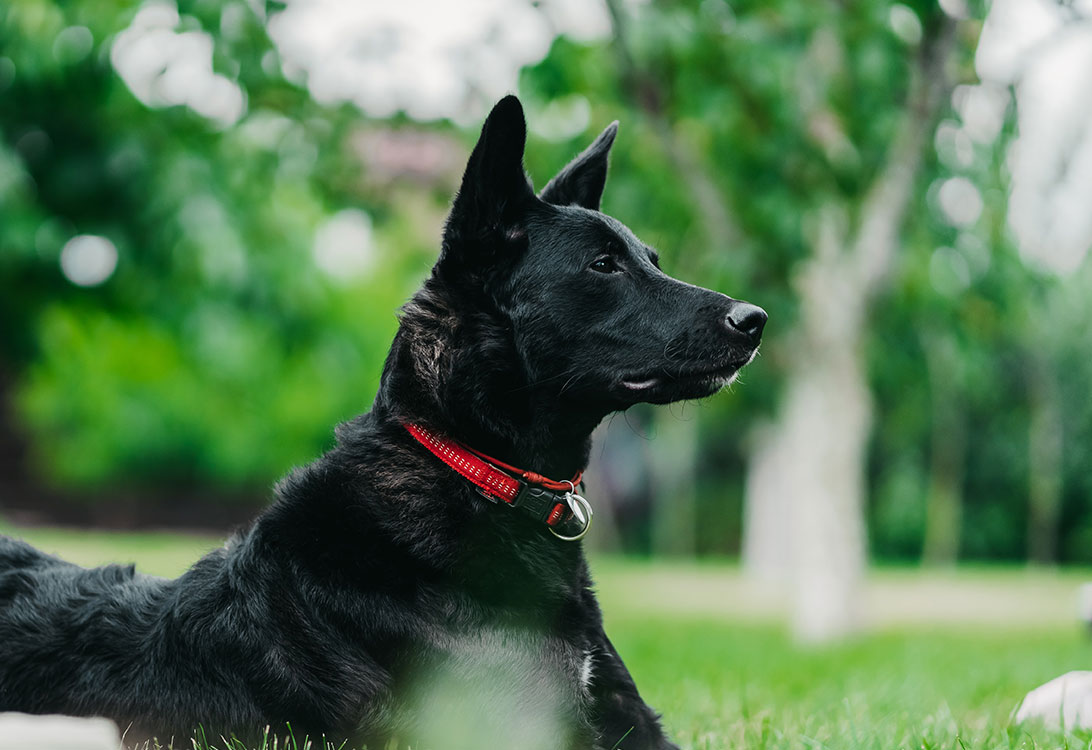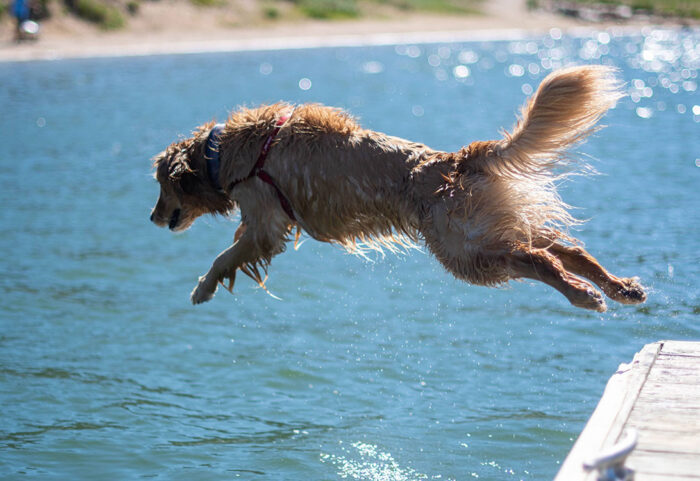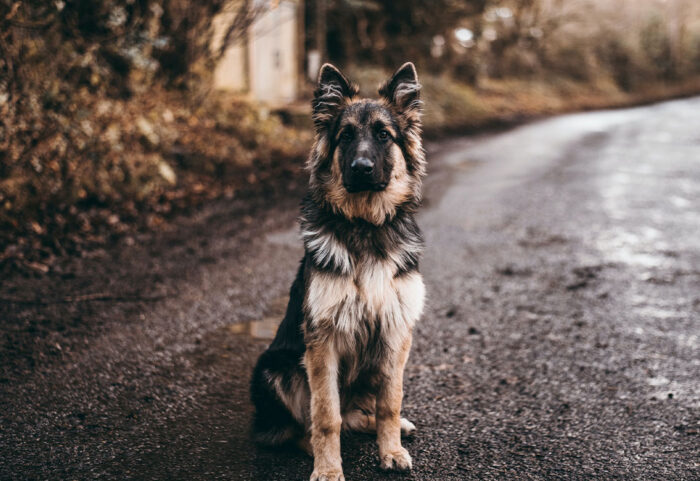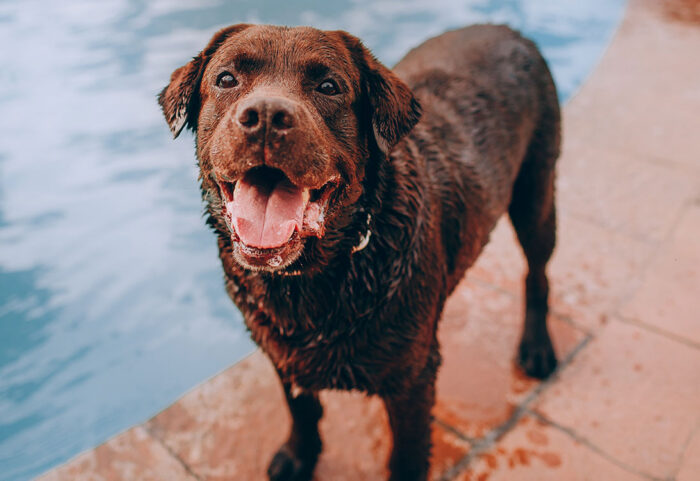First 2 Hours: Your Dog is Sprayed by a Skunk

Oh no! Your dog was sprayed by a skunk. There’s nothing grosser – or more overwhelming – than the smell of skunk spray, and just imagine if you had it all over you! And just imagine if your nose was 40 times better at smelling stuff… Your dog is most likely to be sprayed in the warm weather months when skunks are most active, and specifically at dawn or dusk. Remember that skunks can spray up to 15 feet when they feel threatened which is just one more reason you should always keep your dog on a leash outdoors. If your dog is sprayed by a skunk, you’ve got to act fast. Time is of the essence when it comes to removing the smell and saving your nostrils.
0-30 Minutes In: Assess the Severity
In general, skunk spray isn’t dangerous to your dog. The exception occurs when the spray gets into his eyes; it can actually act like tear gas. If his eyes are red or irritated, contact your veterinarian. It’s also possible that your dog will swallow some of the secretion since skunks tend to aim for the head, and if this happens nausea and vomiting could follow. If your dog seems to be having any adverse effects to being sprayed, it’s your best bet to take him to an emergency veterinary clinic right away for proper treatment and monitoring. If you determine your pet’s health isn’t in danger, your next line of business is to get the secretion off your dog. Skunk spray is a yellow oil made up of volatile compounds like thiols and thioacetates, both of which readily bind to skin and fur. It’s very important that you do not spray your dog with water after he’s been sprayed by a skunk! The oil will repel the water and actually become more pungent once wet. Get your dog to a location where you can work to remove the spray from his fur without having to chase him down. A bathtub or backyard is ideal…it will be messy!
30-60 Minutes In: Remove the Skunk Spray
Contrary to popular belief, tomato juice does not remove skunk spray, and neither does distilled vinegar. Your absolute best choice for removing skunk smell is an over-the-counter skunk combatant – they sell them at most pet supply stores and drug stores. If you live in an area where skunks are common, it’s not a bad idea to keep some on-hand. Can’t use specialized skunk remover? You can make your own with a few ingredients found in most people’s homes:
- 1 quart hydrogen peroxide solution (preferably 3%)
- 1/4 cup baking soda
- 1-2 teaspoons of dish detergents
Mix all three ingredients together and (while still bubbling!), apply it to every part of your dog that’s been hit by the skunk spray. Massage it in all the way to the skin – you should wear rubber gloves to avoid getting the oil on your hands – and then rinse completely with clean water. The dish detergent will break down the oil so it can be washed off while the baking soda and peroxide oxidize the substance, making it less odorous. Caveats: Be extremely careful using any hydrogen peroxide solution on your dog, and especially near his eyes, nose, and mouth. Also note that peroxide is bleach! It may bleach particularly dark-furred dogs’ coat a bit, and anything you’re wearing as well.
1 Hour – 2 Hours In: Shampoo and Move On
Once you’ve fully “removed” all the skunk spray from your dog, it’s time to use his regular shampoo to give him one (or two) final passes. Lather him up well, then rinse him off completely. Because of the vigorous washings, your dog’s skin may be a little drier than usual over the next few days. Some people who’ve used the homemade skunk solution report a slight skunky odor every time their dog gets wet for weeks or even months. This is yet another reason to keep a bottle of skunk remover on-hand in case of an emergency. If you have any concerns about your dog’s skin, his eyes, his GI system, or any other part of his body affected by the skunk, talk to your vet. This is actually one of the most common problems most vets treat!


